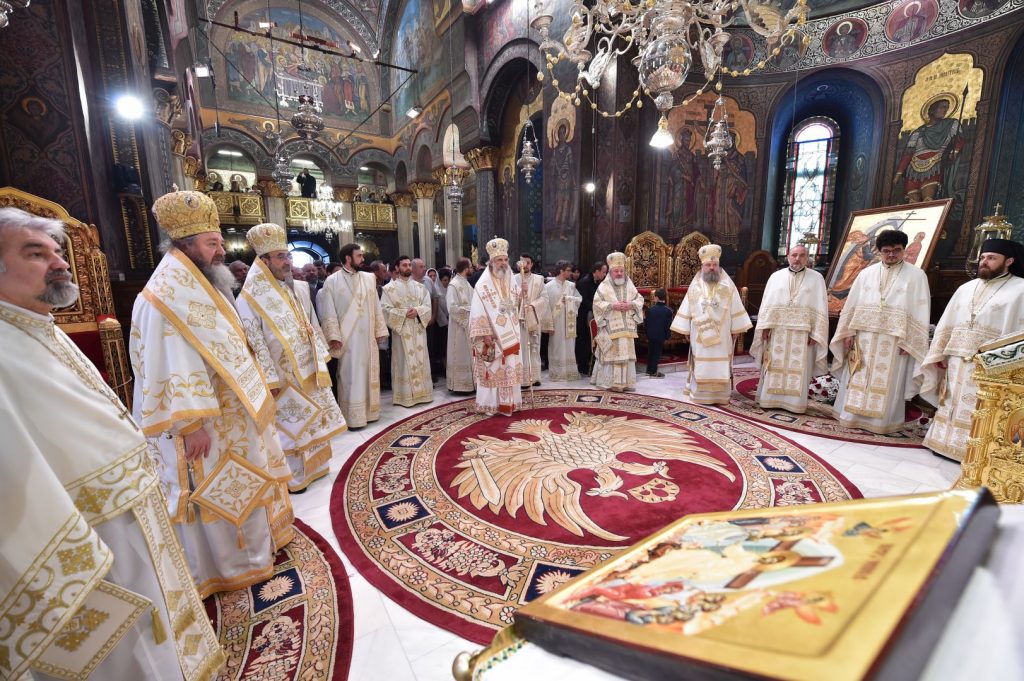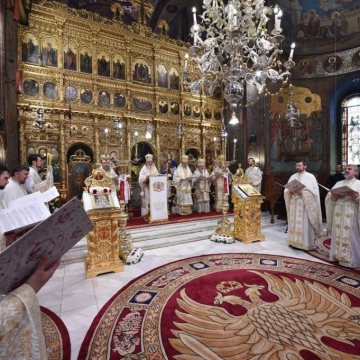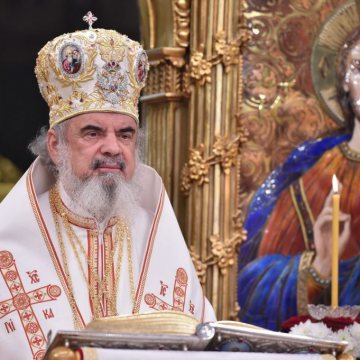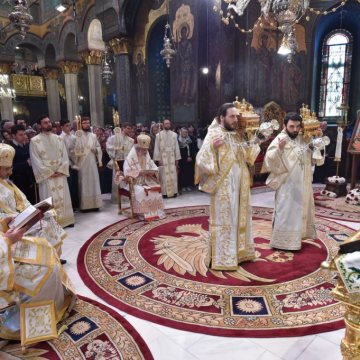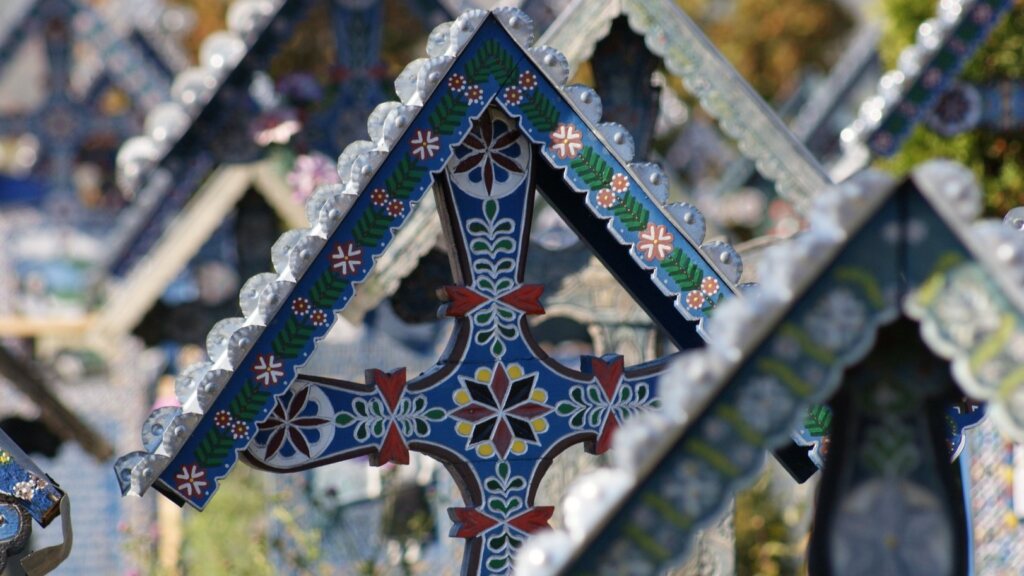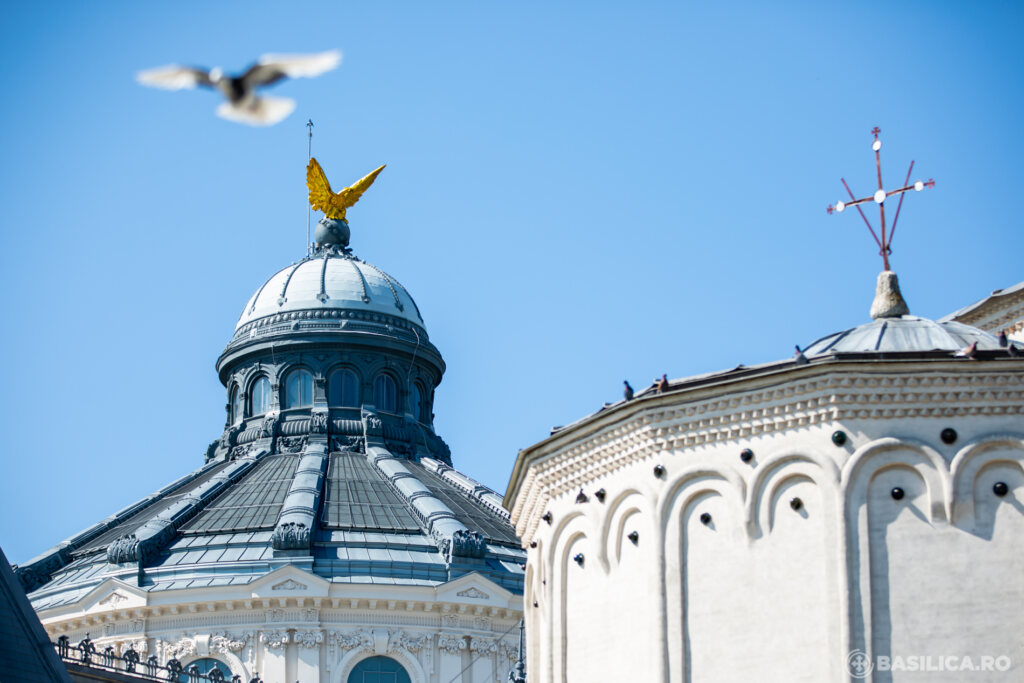On Pascha Sunday His Beatitude Patriarch Daniel officiated the Agape Vespers at the Patriarchal Cathedral in Bucharest, during which he offered his reflections on joy and peace as two great blessings of the risen Christ.
Concelebrants for the Agape Vespers included Bishop Qais of Erzurum (Antioch Patriarchate), the Patriarch’s auxiliary bishops Varlaam of Ploiesti and Ieronim of Sinaia, and the assistant bishop to the Archdiocese of Bucharest, Timotei of Prahova.
Two great blessings of the risen Christ: joy and peace
After the gospel reading, Patriarch Daniel offered his reflections on joy and peace as ‘the two great blessings that the crucified and risen Jesus Christ gives to the world through the myrrh-bearing women and his disciples.’
‘These two states show us that Christ’s resurrection enlightens, enriches, gives meaning and fullness to the human soul and earthly life,’ the patriarch stressed April 8.
His Beatitude explained the two spiritual states, reflecting on their etymology.
Joy is the fruit of grace
He said that ‘joy is the fruit of grace in the human soul, since grace is called charis in New Testament Greek language, and joy chara.’
‘Therefore, when grace bears fruit in man’s soul it brings joy.’
Peace means fullness of life
‘The peace that Christ offers – shalom in Hebrew – means fullness of life, harmony, fulfillment,’ the Patriarch added.
‘When Christ is present and meets with us as a response to our faith and love for Him, He gives us joy and peace,’ Patriarch Daniel noted.
God’s response to our faith and love for Him ‘did not happen only once, but it is present constantly in Christ’s Church,’ the patriarch said.
That is why, after attending long services, after much prayer and spiritual struggle, the believers never return to their houses with an empty soul, His Beatitude explained.
When the divine services are physically tiring, ‘the believers receive a profound peace and a great joy in their souls,’ he said.
Christ’s risen body was fully spiritualized
In the second part of his sermon, the patriarch reflected on the miracle of Christ’s entering the room where the disciples were gathered through closed doors.
This was possible because the risen body of Christ was ‘fully spiritualized and deified.’
‘He walks through closed doors without breaking the doors, without altering the integrity of matter.’
‘This means that his body is not a reanimated corpse that came back to earthly life, but rather that His body is spiritualized and deified and totally free of every constraint, every natural determinism.’
The Patriarch of Romania noted that this is ‘man’s freedom in the Kingdom of God, which was opened by Jesus Christ through his raising from the dead,’ and that matter, time, space, and distances can no longer have any constraints on man.
The stigmata on Christ’s risen body
Although this mystery takes place, the patriarch said, Christ’s body never loses its physical identity.
‘It is the same body that was crucified on the cross and laid in the tomb.’
‘That is why He showed His hands and side to the disciples. He rose from the dead, but the signs or stigmata of the Cross remained on his risen body.’
‘We see that Christ does not separate his Resurrection from the Cross, nor the Cross from the Resurrection,’ the patriarch said adding that ‘He bears the stigmata of the Holy Cross forever in his risen and glorified body.’
At the end of his speech, the patriarch explained why the gospel passage was read in twelve different languages saying that it reflects the universality of Christian faith, which was preached by the Apostles to all the Gentiles.
Photos: ZL
